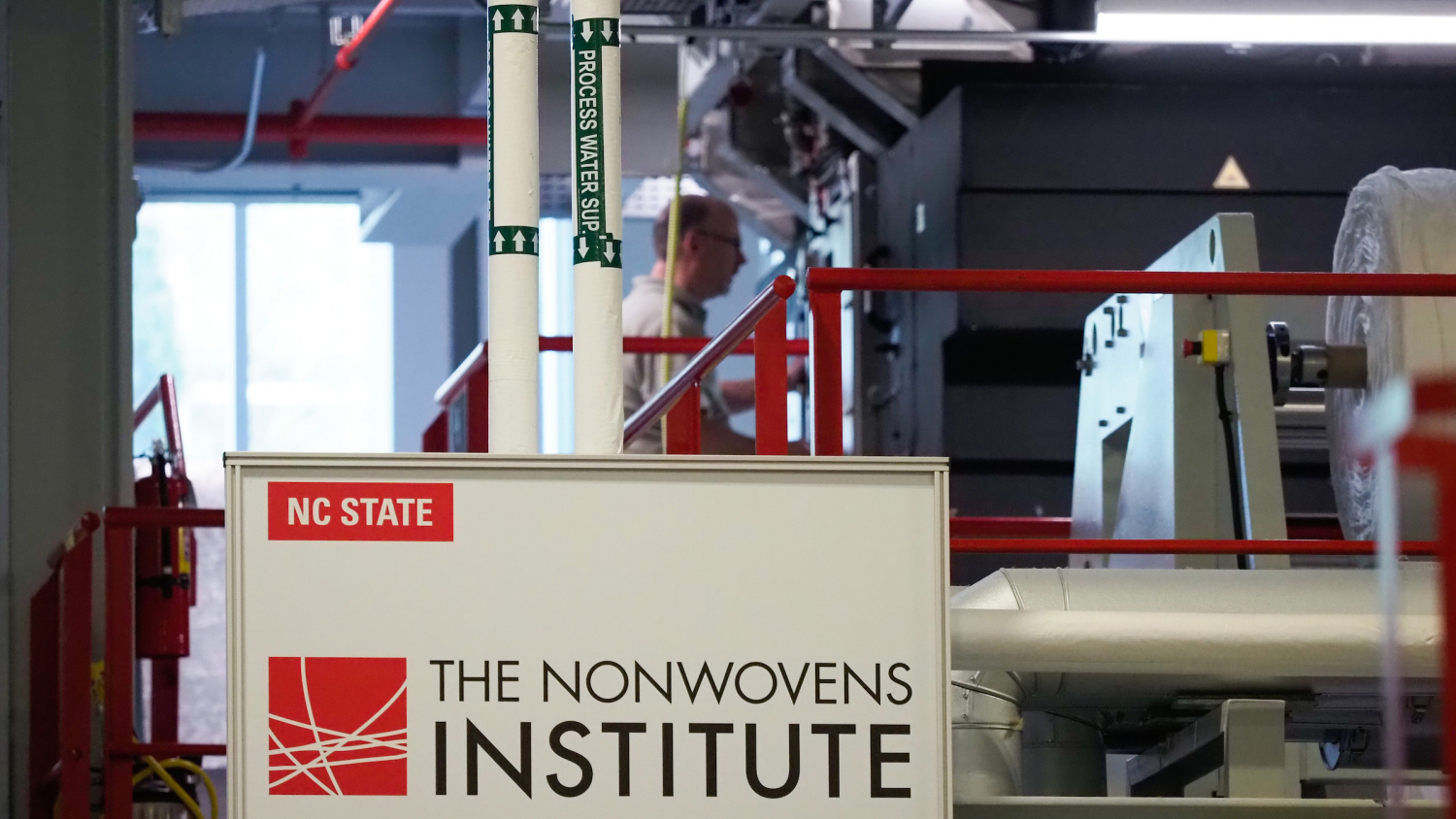NC State Research Empowers Product Developers to Make More Sustainable Choices
An in-progress database will enable brands to compare the environmental impacts of the most common fibers.

The scale of the waste and environmental impact caused by the fashion industry is staggering. Nearly 75% of the clothing produced each year ends up in landfills or is burned. That amounts to nearly 20 billion pounds annually in the United States alone.
The smallest components of these products – fibers and yarns – could unlock solutions to this giant problem.
New funding from the Walmart Foundation will empower the scientists at the Wilson College of Textiles, in partnership with the North Carolina Textile Innovation and Sustainability Engine (The Textile Engine), to do just that.
The Wilson College is leading the research and development for The Textile Engine, a National Science Foundation (NSF) Regional Innovation Engine, which is a collaboration of The Industrial Commons, NC State and other key regional partners.
Using this new $350,000 grant, researchers will conduct life cycle assessments (LCAs) for materials made of some of the most common new and recycled fibers used in the fashion industry. LCAs are data-driven reports that detail all of the estimated environmental impacts of making an item (in this case, yarns): air pollution, effluent and energy use to name a few.

“With this generous gift from the Walmart Foundation, we are able to accelerate Life Cycle Assessment work and expand to include more materials,” says Melissa Sharp, deputy CEO of research and development for The Textile Engine.
This information will serve as a valuable tool for product developers, who can use LCAs to make data-based comparisons and choose the yarn that best meets their brand’s sustainability goals while still meeting required performance standards.
“It’s not a matter of what is the most sustainable material, but it’s a matter of what you’re trying to address, because there are costs and benefits to every material,” says Professor Karen Leonas, who will conduct these LCAs.
For example, one fiber could require less energy to process but also lead to increased air pollution.
Because each of these LCAs will be conducted by the same team using the same parameters, this project will enable developers to make true one-to-one comparisons.
“There is nothing like this available today for fiber materials,” Sharp explains.
LCAs are also a pivotal asset to any brand that wants to market its products using certain sustainability claims. Research has shown that customers are willing to pay more for a product if they know it was made sustainably. At the same time, studies indicate that these consumers are also becoming more skeptical of environmental claims made by companies and pressuring brands to be more transparent and accurate about a product’s sustainability. LCAs can provide these companies with the proof that helps them to gain the trust of wary consumers.
“Brands and retailers have to be able to substantiate their marketing claims on these materials,” The Textile Engine CEO Anne Wiper explains.
Removing barriers to LCAs
In order to create LCAs, detailed data is gathered at every step of the process and placed into a computer model. Take cotton, for example. An LCA for the environmental impact of a cotton fiber before it is even sent to the cotton gin would include:
- Where the cotton is grown,
- Whether the seeds are planted and sown mechanically or by hand,
- Pesticide use,
- Water use,
- And a number of other variables.
“They’re very tedious and very time consuming to develop,” Leonas says.
In other words, conducting an LCA is far too much work for most product development teams to add to their workloads. And while open LCA models do exist, they fail to factor in many textile-specific steps and considerations.
On the other hand, paying for an outside company to conduct an LCA presents a sizable cost to businesses.
“It can cost over $100k to do an LCA for one product,” Anne Wiper – who has worked for brands like Nike and SmartWool – explains.
This hefty bill might cause executives to think twice before calling for new sustainability-focused products.

The Textile Engine plans to break down some of these barriers by creating an online, open-source database from their LCA findings.
“I think that this will be an amazing resource,” Wiper says. “For companies that are trying to reduce their impact and do it in a way that is economically viable, this LCA repository will allow them to make more informed choices.”
By estimating the environmental impact of fibers, the LCAs from this partnership with the Walmart Foundation will represent 60-70% of the environmental impact for textile-based products. This will make LCAs for those products more affordable as well.
Building a meaningful foundation
Wiper hopes this database will not only provide immediate value for businesses and consumers, but also help business leaders understand the value of using recycled materials. LCAs will be conducted for both new and recycled versions of fibers and yarns.
“In the long term, recycled materials will be less expensive than the new materials, but generally in the startup phase, they’re not. A lot of brands are willing to commit to having that tradeoff as long as they can tell their customers why. These LCAs will allow them to do that,” Wiper explains.
Such a shift would demonstrate movement toward a circular textile economy. This idea goes beyond brands using recycled materials. It also means that businesses all along the textile supply chain can make decisions based on how it will affect the ability to recycle textile materials and the quality of those recycled materials.
“The real opportunity here is that we’re disposing of things that have value,” Wiper continues. “And so there is a business case to be made in addition to the positive environmental impacts.”
“The real opportunity here is that we’re disposing of things that have value.”
– Engine CEO Anne Wiper
As an increasing number of brands use these new LCAs and incorporate recycled yarns into their product lines, they can uncover market gaps for recycled and regenerative materials.
“Ultimately,” Sharp says, “we can unlock research and investment opportunities for creating new, regenerative materials that are designed for circularity and offer advanced performance features.”
- Categories:


